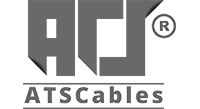The Latest Trends
Cabling is the backbone that underpins today’s business functions, and it will only become more essential in the future. The sort of category cable you’ll require is mostly dependent on the speed at which you access the internet. As a result, the role of cabling will continue to increase, even as cable needs and configurations evolve.
For Internet and other telecommunications and connectivity applications, a number of cables are available. These network cables are classified by the TIA (Telecommunications Industries Association) into different Ethernet cable classifications, such as Cat 5 cables, Cat 6 cables, Cat 7 cables, and Cat 8 cables, and are summarized below:
Category 8 cable are now available and give a significant increase in data transfer bandwidth. As a result, Cat 8 cables are typically more expensive. It requires metal-jacketed connectors including double shielding and therefore is limited to 100-foot runs.
It is available in a wide range of lengths, from 6 feet to 100 feet, and may be used both indoors and outdoors. It has a 2,000 MHz bandwidth and can transfer data at up to 40 Gigabits per second. Cat 8 is a flexible and highly Ethernet cable that may be used to replace any other Ethernet cable because of whatever reason you want.
If you’re looking for the finest of the best in terms of protection and speed, this is it. For indoor or outdoor applications, Cat 8 cables are also resistant, anti-corrosion, and made of the more durable PVC material. It’s a great option for business and individual network cables, and it might even increase performance.
Category 7 Every pair of wires is the double, with an overall shield surrounding the entire package of wires, and can carry a max of 10Gbps over 330 feet. Cat 7 Ethernet Cable is much more secure than Cat 6 Ethernet Cable. It’s 50 feet long, well under the 100-meter restriction, so there shouldn’t be much, if there are any, loss, and it’s equipped with RJ45 connectors that support the standard 250 MHz bandwidth. It’s designed for applications that demand transfer at rates of up to 600 Mbps.
Cat 6 and 6a is used in both home and industrial networks, Cat 6 and 6a cables are used. They are fully compatible to Cat5/5e, but perform much better and are less prone to interference and system distortion. The size of Category 6a cable and Category 6 cable is the key difference. Category 6a contains more copper and can sustain 10 Gbps speeds at 100 meters, enhancing its potential. Cat 6 cables are more securely during production and often include an external foil or braided shielding. The shielding helps to reduce crosstalk and noise interference by protecting the twisted pairs of wires inside the Ethernet cable. Cat 6 operates at 250MHz and is specified at up to 10Gbps for larger distances to 55 meters; Cat 6a, which operates at 500MHz, is recommended for higher distances of up to 100 meters and uses the Rj 45 connector.
Cat 5 and cat 5e delivers speed of up to 1 Gbps and can transmit power for Power Over Ethernet applications, thanks to its 100MHz performance. The TIA/EIA recognizes this type of cable. It operates at a slightly higher frequency than Cat-5 cable, with a maximum speed of 125 Mbps. The twisted pairs in cables are usually twisted to the same degree as Cat 5 cables.
Cat 3 allows for transmission speeds of up to 16 MHz and data rates of up to 10 Mbps. It was once common for usage with 10 Mbps Ethernet networks (100Base-T), but Cat-5 cable has since supplanted it. The TIA/EIA does not recognize this. Also, the category cables plenum is experiencing growth and is expected to grow in the next few years.
Conclusion
Cost will always be a consideration when looking for category cables, but it is not the only consideration. Choose CAT 8, CAT 6A, CAT 6E, or CAT 7 for speedier alternatives. The introduction of increasingly powerful technologies in recent years has necessary for speedier data transfers.
The greatest Cat 8 ethernet cable accessible in stores and markets right now, Actually, the best available category Ethernet cables are CAT 8, which are renowned to become the most reliable and great at managing high-speed internet. However, before purchasing a Cat 8 cable, several considerations must first be considered:
Data Transference Rate: A wire’s total transference rate shows how well it connects one device to another.
Cable length: When it comes to network cables, cable length is also important. Longer cables, on the other hand, tend to have a drop-off in speed performance above 25 feet, that is, without any signal boosters added. In this scenario, a Cat 8 cable within the 10-meter range is recommended.
Meta Title:
The Latest Trend in Category Cables
Meta Description:
If you’re looking for the finest of the best in terms of protection and speed, cat 8 is trendy in category cables. For indoor or outdoor applications, Cat 8 cables are also resistant, anti-corrosion, and made of the more durable PVC material. It’s a great option for business and individual network cables, and it might even increase performance.
keep connected
Get updates by subscribe our weekly newsletter

